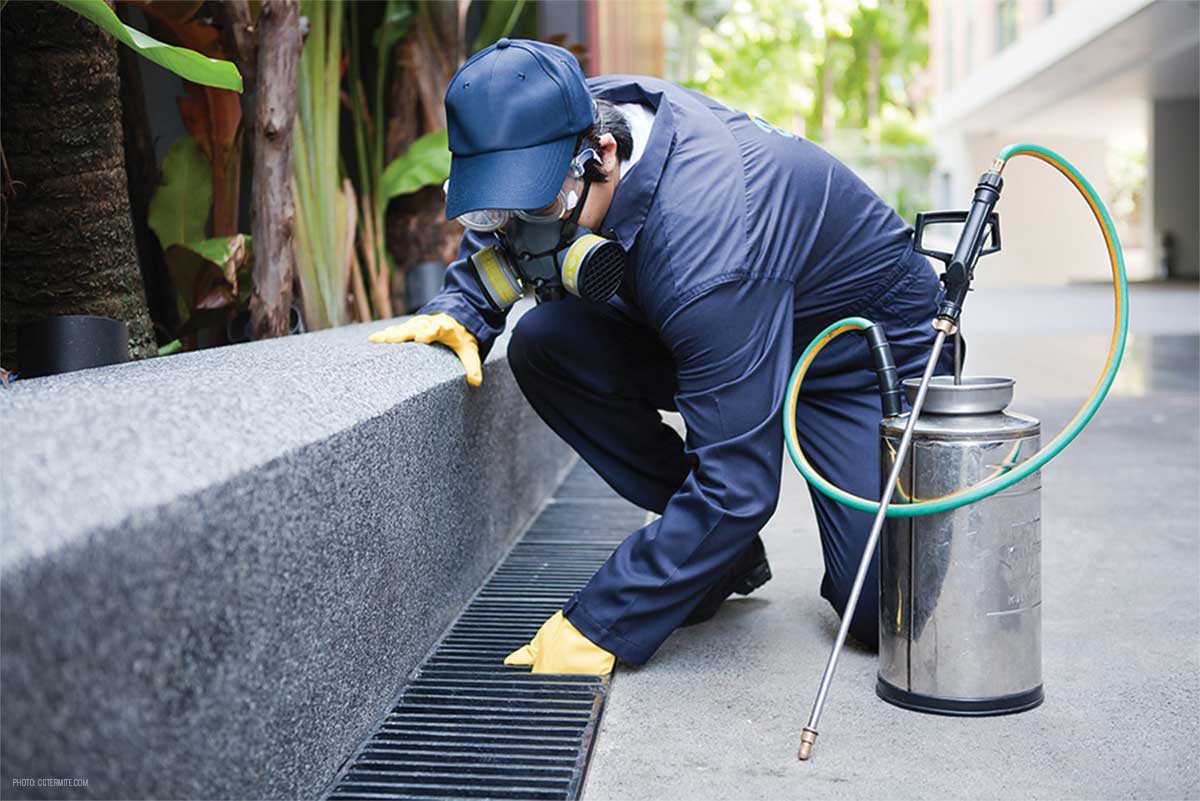Customized Pest Control Solutions Chicago: Tailored Program for Your Requirements
Customized Pest Control Solutions Chicago: Tailored Program for Your Requirements
Blog Article
A Comprehensive Overview to the Different Types of Parasite Control Techniques
With the myriad of bug control approaches readily available, it can be overwhelming to discover the most reliable solution for a particular parasite problem. In this comprehensive overview, we will explore these different types of pest control approaches, supplying insights right into their applications and advantages. By the end, you will certainly have a more clear understanding of which approach might be the finest fit for your parasite control demands.
Chemical Pest Control Methods

One usual kind of chemical insect control is pesticides. Pesticides are chemical substances that are particularly developed to eliminate or ward off pests. They can be applied in numerous kinds, such as sprays, baits, or cleans. Pesticides target particular insects, such as insects, termites, or ants, and can be made use of both inside your home and outdoors.
An additional type of chemical parasite control is rodenticides. These are chemical compounds made to manage populaces of rodents, such as rats and mice.
Herbicide, likewise referred to as herbicides, are one more sort of chemical insect control approach. Herbicides are developed to uniquely kill undesirable plants, called weeds, without triggering injury to preferable plants. They are frequently utilized in agriculture, landscape design, and gardening to manage the growth of undesirable greenery.
While chemical parasite control methods can be extremely efficient in removing pests, it is crucial to use them carefully and follow security standards. Overuse or misuse of chemical pesticides can have unfavorable influence on human health and wellness and the setting. It is essential to utilize these techniques sensibly and consider different insect control techniques whenever possible.
Biological Insect Control Approaches
Biological parasite control methods entail using living microorganisms or all-natural compounds to handle and control pest populaces. Unlike chemical methods, which commonly rely upon artificial chemicals, organic control techniques make use of the natural opponents of parasites to control their populations. This approach is considered more environmentally pleasant and lasting, as it minimizes using dangerous chemicals and reduces the risk of chemical resistance.
One extensively utilized biological pest control approach is the intro of natural predators or bloodsuckers. Ladybugs are introduced to control aphids, while particular wasp varieties are launched to target caterpillars. These killers and parasites feed on insects, minimizing their numbers and stopping infestations.
Another biological control method is the use of pathogens. Particular microorganisms, viruses, and fungis can be employed to contaminate and kill certain bugs. The bacterium Bacillus thuringiensis is commonly utilized to control caterpillars, as it creates toxins that are deadly to these pests.
Biological control approaches can also entail making use of scents or natural compounds that interfere with the mating patterns of parasites. By hindering their recreation, these approaches assist to lower pest populations gradually.
While organic insect control approaches are normally reliable, they may call for longer periods to attain desired outcomes compared to chemical approaches. Furthermore, careful factor to consider needs to be provided to the selection and launch of natural adversaries to protect against unplanned damage to beneficial organisms or environments.
Physical Bug Control Methods
To successfully handle and control pest populaces, alternative bug control techniques known as physical bug control methods are used. One more physical insect control method is the installment of fences or wall surfaces to keep bigger bugs, such as deer or rabbits, out of yards or farming areas. Physical insect control approaches are an ecologically pleasant alternative to chemical pesticides, as they do not count on the use of dangerous chemicals.
Natural Bug Control Approaches
Natural parasite control methods use a sustainable and eco-friendly strategy to managing and removing pests. These techniques focus on the use of all-natural compounds and biological representatives, lessening the need for chemical pesticides that can damage the environment and human health and wellness. One of one of the most common all-natural insect control techniques is organic control. This entails presenting natural killers or parasites to victimize or parasitize the insects. For example, ladybugs are commonly presented to gardens to control aphid populaces. An additional all-natural method is the use of repellents acquired from plants. Specific plants, such as marigolds, lavender, and peppermint, killer bug emit aromas that drive away bugs like insects, flies, and ants. In addition, social control methods can be employed to protect against and manage bug problems. This includes proper cleanliness, normal upkeep, and advertising biodiversity in the yard. As an example, rotating plants, getting rid of garden debris, and motivating natural killers can aid prevent the buildup of bugs. By taking on these all-natural bug control approaches, individuals and neighborhoods can properly manage bugs while reducing the unfavorable influence on the setting and human health.
Integrated Bug Management (IPM)
Integrated Parasite Management (IPM) is a thorough and organized method to pest control that integrates various methods and strategies to efficiently manage bugs while minimizing making use of chemical pesticides. IPM aims to keep insect populaces below the economic injury degree by utilizing a combination of social, organic, and chemical control approaches.
Cultural control methods include customizing the atmosphere to make it much less desirable for bugs. This can include techniques such as plant turning, correct sanitation, and using resistant plant varieties. By creating negative conditions for bugs, social control techniques can substantially reduce pest populations.

Chemical control methods are utilized as a my explanation last option in IPM. They include the targeted and judicious use chemicals to manage bug populaces. Unlike conventional pest control techniques, IPM aims to minimize termite solution at home making use of chemical pesticides by employing alternate methods.
Integrated Bug Administration (IPM) is a positive strategy that concentrates on lasting pest administration as opposed to depending entirely on responsive procedures. By combining multiple control techniques, IPM gives an extra sustainable and eco-friendly method to pest control.
Final Thought
It went over chemical, biological, physical, and all-natural parasite control techniques, as well as the integrated pest monitoring technique. By comprehending these various techniques, people can make informed choices on which bug control approach is most suitable for their specific needs and preferences.
Report this page